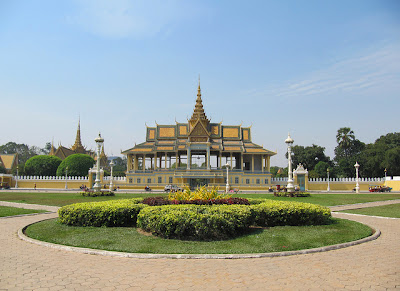Travelling around Phnom Penh is pretty easy because there are taxi everywhere. Now you may wonder how taxi in Phnom Penh look like. We have four main different types of taxi in Phnom Penh nowadays and perhaps three of them are pretty unique. Different type of taxi charges differently but it worths to try all of them while you are in the city.
Cyclo - Cee Clo
Cyclos used to be very popular amongst local people but because they are slow to travel around, not many people want to ride a cyclo and now they are disappearing from the city. Cyclo rooted back to the French colonial era in the 1900s and now it's one of the few types of traditional taxi remains today. Cyclos are perfect if you want visit the city in a group or just to do some sightseeing around the city. Perhaps best thing about cyclos is that they are cheap.
Motor Taxi - Motor Dup
A motor can also be a taxi. In local language, a motor taxi is called a Motor Dup. There is no fixed price so it depends on the negotiation between the driver and the customer as well as the goal of the destination. Generally, it's not quite expensive and due to the traffic, it's the fastest way to move around the city especially when you are in a hurry. However, safety is a concern because some drive very fast. But don't worry, you can tell the driver to drive slowly.
Tuk Tuk
Tuk Tuk is becoming very popular amongst local people and foreigners nowadays. However, it's a bit costly and may not travel as fast as Motor Dup. Tuk Tuk is locally made and it is a very modern type of taxi as it has appeared for the past decade. It's really fun to be on a Tuk Tuk. Oh there is no fixed price, and again you need to have a good bargaining skill.
Taxi
Believe it or not, taxi is the newest type of taxi in Phnom Penh and it has been introduced to the city for the past few years. We call it taxi meter and there is fixed price inside the taxi. Taxi is a bit expensive and very slow during rush hours but it's a very good choice during rainy season and for long distance of travel.


































